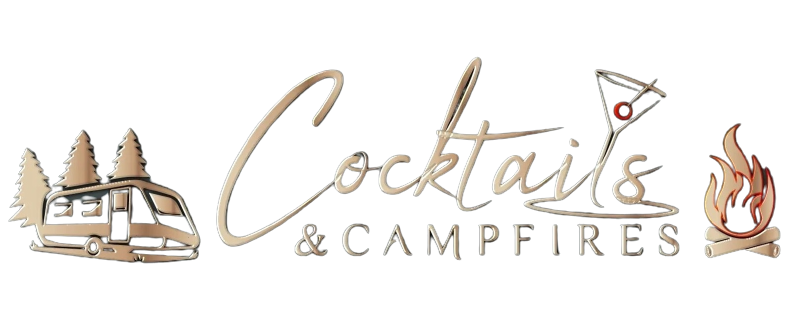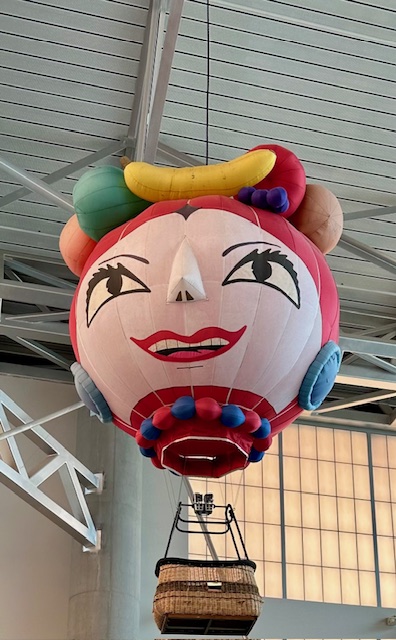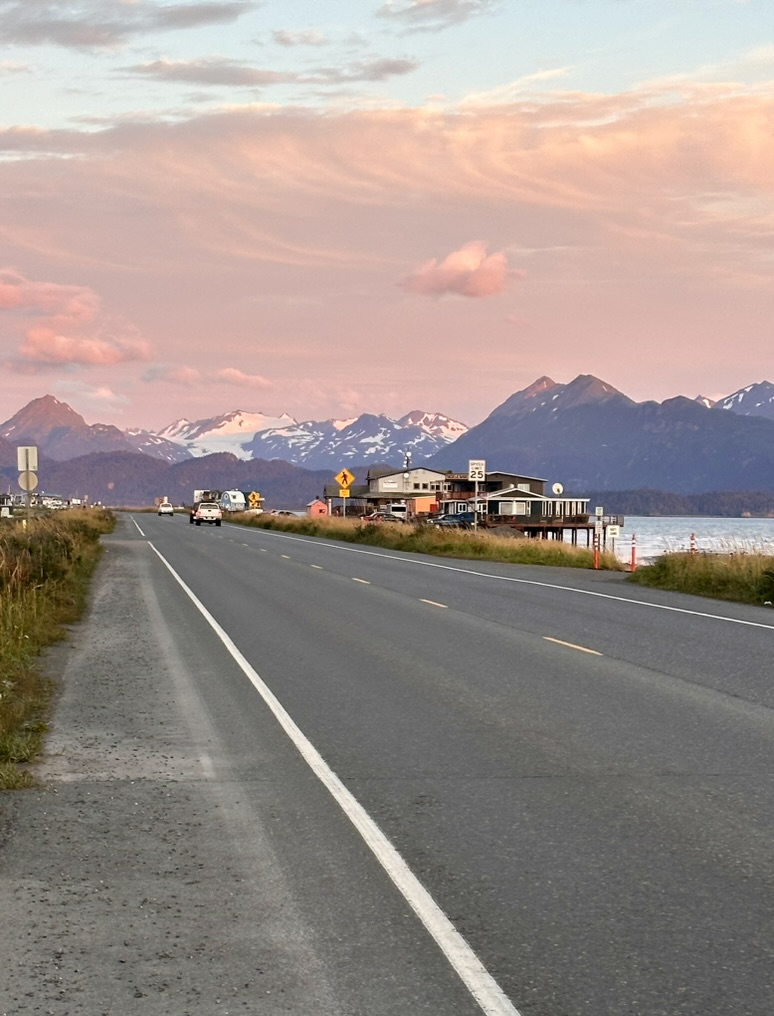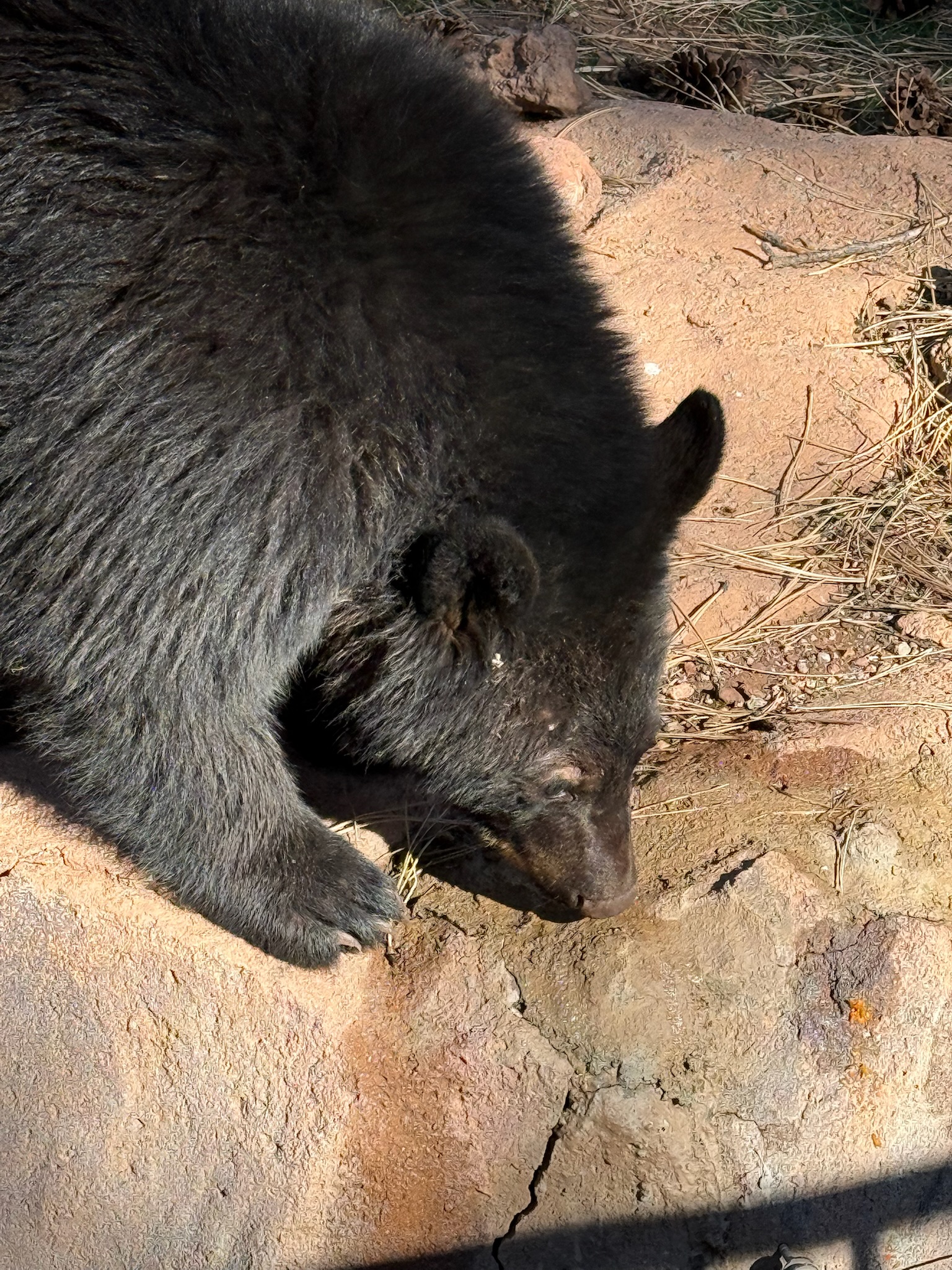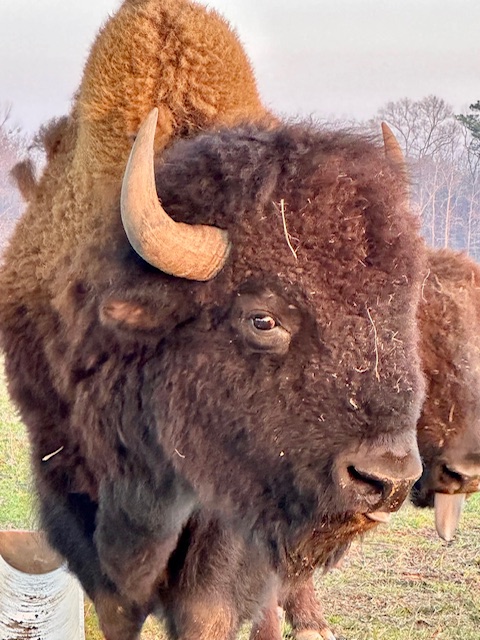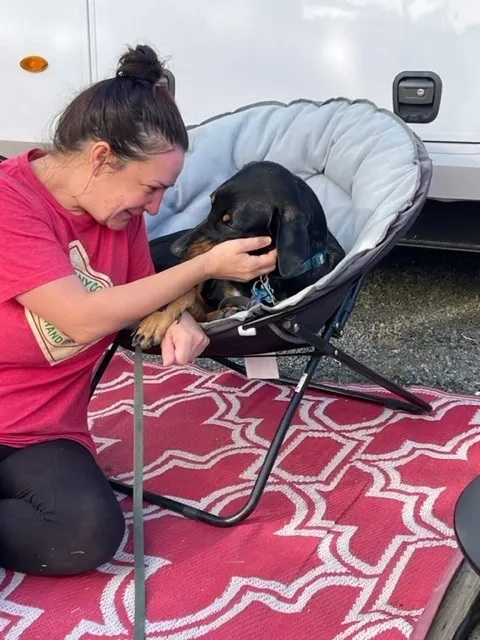After a short stay in Tucumcari, New Mexico, we moved on to Albuquerque (Spanish translation “White Oak”. ) While this is the largest city in NM, the capital city is Santa Fe. The mountains in this area are beautiful. On the East there are the Sandia mountains and on the West, West Mesa. The Rio Grande flows North to South through the City. We went for a hike on one of the many trails at the Petroglyph National Monument and enjoyed great views of the city.
Our RV park – High Desert, was full of really beautiful metal art sculptures – horses, bison, cowboys, armadillos etc. just like ones we had seen last year in Arizona. They even had a stagecoach complete with horses, driver and dog. Very nice and certainly made the park look very attractive.
Derek had found that the brake pads on the RV needed changing, so you tube in hand he spent the better part of the following day, replacing them. Later that afternoon after taking Jax for a walk in a nearby field, we took a drive to the Hot Air Balloon museum. The Museum was named in honor of Albuquerque’s pioneering aeronauts Maxie Anderson and Ben Abruzzo.
Every year in October, Albuquerque holds its famous “Albuquerque International Balloon Fiesta” which is the largest balloon event in the world. It features about 600 balloons and 700 pilots. Hundreds of thousands of guests visit Balloon Fiesta each year, and hundreds of thousands more fans watch the balloons from outlying areas and on TV. In 2022- Balloon Fiesta celebrated its 50th anniversary.
We found the Museum quite fascinating. it covered the evolution of human aviation beginning with ballooning in 1783 and then the many advancements that have followed. Also very interesting were attempts to fly nonstop around the world by balloon. It wasn’t until 1999 that the Breitling Orbiter 3 was able to achieve what no others had accomplished before.
During the Civil War, America’s first military aviation unit was formed by the Union Army, the Balloon Corps. In Europe, balloons were used during the siege of Paris by the Prussians. Later, German zeppelins bombed England during World War I, and in World War II, Japan bombed the United States using the jet stream to send 10,000 transcontinental balloon bombs known as Fugos across the Pacific Ocean.
In the United States, hot air ballooning is a popular sport, whereas in Europe gas ballooning is more common, even for leisure flights. This is because hydrogen is cheaper and more available in Europe.
Another interesting Museum visit was to the National Museum of Nuclear Science & History. This museum covered the development of the Atomic Age in the US from the atomic bombs dropped on Japan used to end WW11 and the missiles developed during the Cold War, to early research of nuclear development through to today’s peaceful uses of nuclear technology(power generation and medicine) and the disasters at 3 reactors (Chernobyl, 3 mile island and Fukushima ) grim testimony to the destructive power of the atom.
Outside they had a number of aircraft including a B29 bomber similar to the one used to drop the bombshell on Japan, a B52 and several missiles. As well, a mock up of the tower (100 feet) used to drop “Gadget” the first US atomic bomb at the Trinity site in New Mexico (we later stayed in an RV park that was less than 50km from the Trinity site – close enough for me)
All in all an interesting collection of artifacts but a little surreal when you consider even the smallest of missiles on display could easily destroy the museum, all those in it and a substantial number of people in the vicinity – I shudder to imagine the effects of “Gadget” which by all accounts pales in comparison to some of the larger ICBMs today – let’s hope the threat of these devices is enough to dissuade anyone from launching one.
